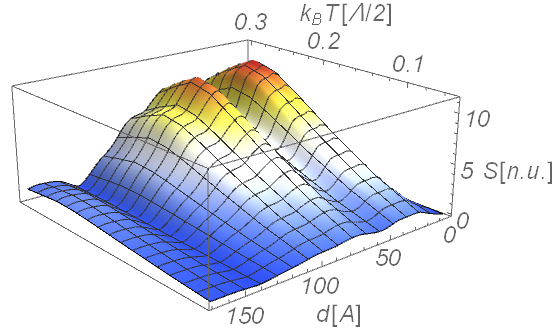We congratulate dr Piotr Chudziński on the successful completion of his habilitation at the IPPT PAN!
The idea and subject of the habilitation is perhaps best explained using a fragment of his summary of professional accomplishments.
“One of the main objectives of materials engineering is to design materials with improved capabilities. From this perspective a crucial role is played by our ability to control and modify electricity and heat transport through the material, these in turn are determined by electric, heat, thermoelectric and optical conductivities, quantities that go under a common name of transport coefficients. We are used to a canonical classification of materials as metals, semiconductors and insulators as determined by the presence (or absence) of the single particle spectral gap. This way of reasoning – a paradigm actually– relies on a single particle picture whereby inside a material there exist a gas of free electrons that are entirely responsible for transport phenomena. This paradigm , which leads to the conclusion that all transport coefficients are determined in this way, is actually pretty restrictive. To give a few examples: the resistivity of a metal must follow T2 law while for a semiconductor it is an exponential, the thermoelectric figure of merit is limited by Wiedman-Franz law that firmly links heat and electrical conductivities, the effects of magnetic field are solely due to weak Lorentz force and hence they are very small, interaction with light is always instantaneous which severely limits the amount of information we can gather about our samples. Overall, in the framework of this single particle theory it is hard to improve further the quantitative properties of materials and impossible to obtain qualitatively new phenomena, and hence new functionalities. A natural question is: can we move beyond this paradigm and create materials with much improved transport coefficients or even with fundamentally new properties? Experimental results of the last two decades suggest that this is definitely possible, and that by working e.g. in the vicinity of quantum phase transition we should be even able to control the change from metal to insulator behaviour. However the theoretical framework to describe such phenomena has been largely missing.
As described above, the key assumption in a standard theory is that it relies on a single electron picture, a mean field concept derived for example within Density Functional Theory. Hence, if we want to move beyond this scheme we need to find the way to capture the collective phenomena. This is a broad field of research, which constitutes the crucial problem facing the contemporary materials physics, with hundreds of papers dedicated to the subject. One of the most prominent ideas of how to capture these collective effects, is the idea of quantum hydrodynamics that has been invented in a seminal, Nobel-prize winning work of F.D.Haldane. In there the Tomonaga-Luttinger liquid (TLL) was introduced to substitute the standard Fermi liquid description of electrons in low-dimensional materials. In my habilitation thesis I have reviewed several of my works on this subject. In particular, in this very active field, my focus has been on computing transport properties in materials where the transport physics is dominated by the presence of the low energy collective charge modes and on uncovering anomalous transport mechanisms induced by such collective behavior”.
















